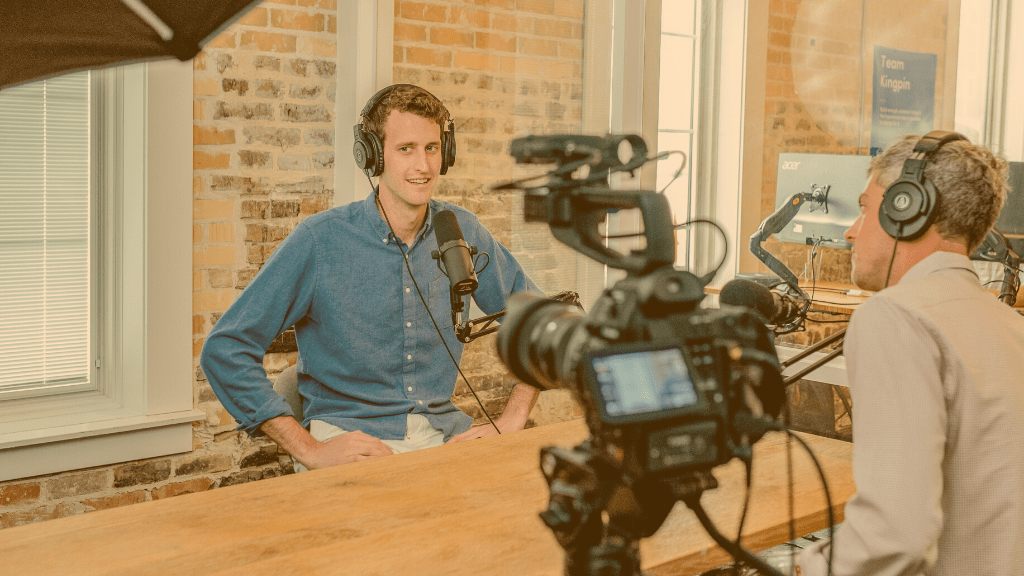Since the pandemic hit in March, chances are you’ve attended a virtual event to some degree — whether it was a webinar, presentation, conference or Zoom happy hour.
Though many cities are beginning to open up, the spectrum of feelings surrounding social distancing is far and wide. Some advocate for reopening businesses completely, while others support staying home. Either way, we’re all feeling uncertain about whether people will actually attend in-person gatherings.
It’s safe to predict that virtual events are here to stay, at least for the foreseeable future. Yet, even as municipalities start to loosen restrictions on large gatherings, many people will likely still feel uncomfortable attending in-person events. As a result, you can expect hybrid events — which combine live, in-person events with a virtual component — to become more common.
Both hybrid and virtual events pose unique challenges for speakers, and even require some new skills. Consider these speaker logistic tips as you’re planning your next virtual or hybrid event.
Fully Virtual Event, No Physical Contact with Speaker
In this case, speakers will deliver their content to the audience while managing their own production and presentation.
To ensure high-quality audio and video, we suggest sending speakers a “setup package,” including a ring light, webcam and lapel mic. Pair the items with a straightforward instruction manual, which should include a walk-through video of setup, a call with a team member for testing and fine print explaining the terms of the equipment.
- PRO TIP: To create cohesive branding for the event, consider sending a backdrop to each speaker to use during their presentation.
- BUDGET-FRIENDLY TIP: If you do not have equipment leasing or purchasing in your budget, try creating a virtual background in which you can ask the speakers to use for their presentations.
For specific examples, check out these virtual event speaker tech recommendations from digital futurist and keynote speaker, Brian Fanzo.
Virtual Event, Speaker Filmed in a Studio
In this scenario, a small team, which includes a videographer, sound engineer, director and speaker, meets at a central location to film the presentation. This video content can be delivered to the audience in a number of formats.
- 100% Live Stream: When live streaming a virtual event, it’s important to add an emcee into the mix. It’s more engaging to have a human being to explain how the virtual event operates, rather than written instructions.
- Live Stream + Pre-recorded Presentations: Leadercast 2020 gathered pre-recorded presentations from their inspiring speakers and filled in the gaps with live streams of the emcee and interviews with the presenters.
- Pre-Recorded Presentations: For this option, all speaker presentations are produced in advance of the virtual event. It’s a good option if you’re striving for consistent, high-quality audio and video. The presentations should be delivered in a content library style, similar to TED Talks. This is a great option if your goal is to educate.
Hybrid Event – A Mix of Virtual & In-Person
For a hybrid event, you’ll have to coordinate both your live event speakers and your virtual event speakers. The key here is achieving a consistent look, tone, and feel. For example, if you plan to have a backdrop or some branding at the live event, make sure that carries over to your virtual speakers.
For the content, you’ll likely have someone running the live show, but with your digital speaker, he or she will typically run the presentation remotely. It’s critical that you go over logistics with your virtual speaker, and ensure you address any and all tech issues in advance of the event.
What Should Virtual Event Speakers Know – No Matter What?
It’s imperative that speakers understand your primary goals, your audience, and your expectations for the virtual event.
Professional speakers have their own set of terms, but as times have changed, those terms have too in some respects. Determine the answers to these questions:
- What type of equipment does the speaker use for virtual streaming?
- Do they have a strong Internet connection for live streaming?
- Will you provide supplemental equipment or studio time?
- Will you need the speaker to appear on social media for marketing purposes before, during, or after the virtual event?
- Who will be the speaker’s main point of contact?
- Will you own the event content (live and/or recorded)?
- Are there additional materials that the speaker can provide as “takeaways” for the audience?
Though the world may be re-opening, virtual events are likely here to stay. For more info, check out this resource: Virtual Conferences & Events: A Comprehensive Guide to Doing It Right





